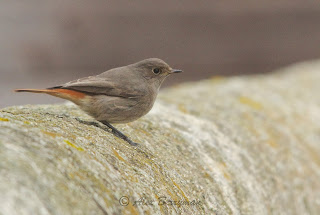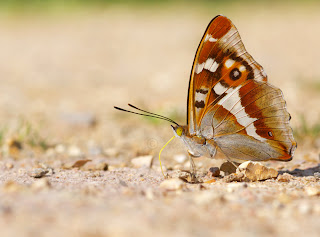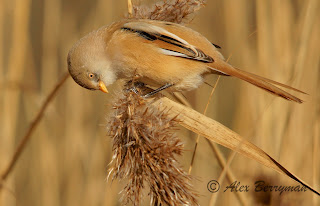Last Saturday I went on a small venture to the South Coast around Milford-on-sea/Pennington! The weather forecast was promising, but somewhat predictably the heavens opened at the moment of arrival and took a few hours to finally clear! Still, this did not deter from our mission - to see a Red-Breasted Goose! Whilst everyone else was preoccupied watching an American wading bird that looks very similar to a species we have over here, with a few minor adjustments(!), I decided it would be nice to photograph something completely different...
Upon arrival we were told "the bird was just here about an hour ago", the worst, though often most common phrase heard when looking for a specific bird! After a somewhat lengthy wait we eventually spotted the goose distantly feeding with 250+ Brent Geese out on the saltmarsh ...

As the tide rose, the flocks of geese split up, and began to gradually swim closer to shore. To try and get some closer shots, I hid behind a nearby wall and watched as the Red-Breasted Goose slowly edged closer. At this stage it was still quite distant, but at no point did the bird move away from the brents (a large proportion of which were Juvenile, proof of a successful breeding season in Siberia). As the goose came closer, and more ID features on this distinctive bird were picked up, it soon become apparent it was a 1st Winter. This was something of a surprise as myself along with a number of other birders presumed this bird was a returning adult that has been wintering along the south coast for the past 3-4 years now! Anyway, the bird...
The bird just kept coming closer until the brent flock suddenly stopped some 20m offshore. Here the Red-Breasted Goose showed superbly, before slowly swimming back out to sea!
EDIT: Well my blog has decided to mess up the two best photographs of the goose, making them appear dark, noisy and just generally a bit hideous! If anyone knows why please let me know, I am editing on Aperture 3. The problem is shown to a certain extent in the photo above. Anyway, to view the two best shows of the goose, please see the Wildfowl Gallery on my website here:
http://www.alexberrymanphotography.co.uk/waterbirds1#h18cf34b8
or on flickr here:
http://www.flickr.com/photos/alexberryman/with/10446590545/
After this amazing encounter (which I doubt will be matched in quite a while!) we headed off to Pennington Marsh to catch up with another rarity, a Long-Billed Dowitcher, an American species. The bird was picked up fairly quickly despite reports that it had been flushed by a Peregrine, though unfortunately was a little distant for the camera...
The local Turnstones showed well however...
As always you can keep up to date with my whereabouts on
Twitter and
Facebook.
Thanks for reading!






.jpg)


.jpg)










































